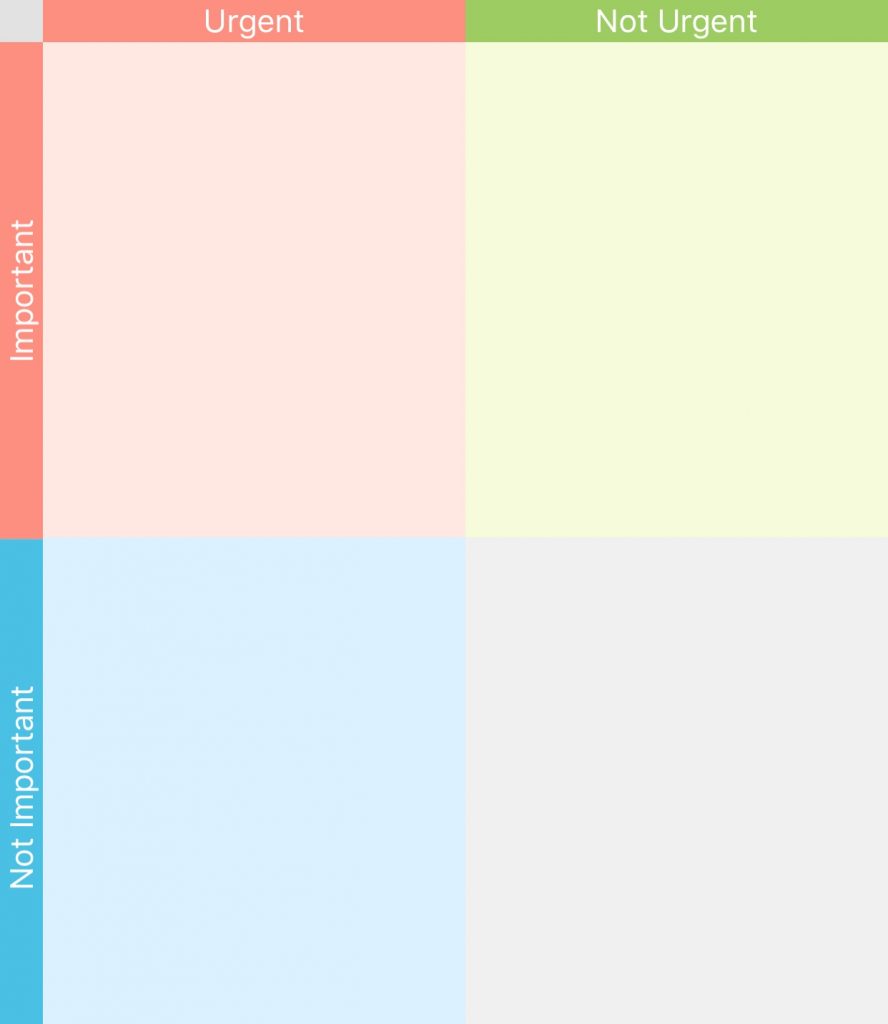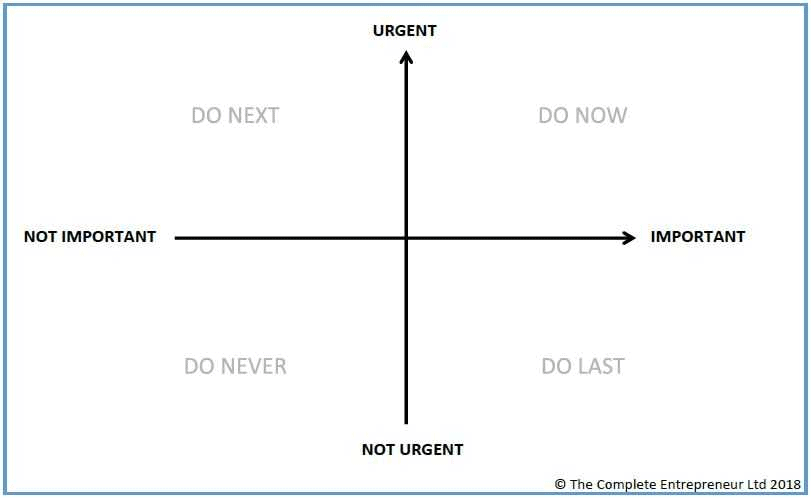You’ve come to the end of a hectic day. Meetings, phone calls, emails, a major staff crisis (the hot water dispenser went on the blink—no tea). Things got away from you so badly you had to ditch the gym session you were looking forward to.
You finally pull into your driveway, press the button for the automatic garage door and… nothing. You curse yourself. The dodgy garage door is something you’ve been meaning to fix; you know it’s a simple task—a quick phone call to arrange for a man in a van to address it—but lately you feel you don’t have the time.
We all have days like this. But if they’re happening too often and you feel like you’re performing an awful lot of tasks without actually getting anything DONE, it’s likely you need to prioritise the urgent from the important.
“I have two kinds of problems, the urgent and the important. The urgent are not important, and the important are never urgent.”
This is a famous quote by Dwight D. Eisenhower, 34th President of the US and affectionately known as ‘Ike’. Before becoming president, he fought in World War I and was the Supreme Allied Commander in Europe during World War II (this included planning and carrying out the D-Day landings).

Right up until his death in 1961, Eisenhower was an accomplished and very productive man and it was from the above quote, and the corresponding ideas of importance and urgency, that the Eisenhower Decision Principle was developed. It was subsequently popularised by Stephen Covey in ‘The 7 Habits of Highly Effective People’. In the book, Covey drew up a ‘decision matrix’ that divided tasks into ‘important’ and ‘not important’ and whether each task was ‘urgent’ or ‘not urgent’.
A basic matrix looks like this:

Let’s have a look at what each quadrant means and what might be assigned to them:
Quadrant 1 – Important & Urgent
These are things that cannot wait—deadlines, pressing problems and emergencies. They also form part of the overall ‘maintenance’ of our life and some tasks may contribute to the fulfilment of our ambitions and potential.
If you plan well and delegate, many tasks in this quadrant can be downsized or even eliminated completely. Proper maintenance of your car and house would be an example of this, as would completing something well before its deadline so that you have more time to spend in Quadrant 2…
Quadrant 2 – Important But Not Urgent
Inside this quadrant are tasks and activities that don’t necessarily require urgent action, but are significant to your personal and professional fulfilment. These include your long-term work goals, relationships and hobbies.
This is actually the quadrant you should aim to spend most of your time on. The cultivation and accomplishment of the things set out here are the primary contributors to lasting happiness and meaningful success.
Quadrant 3 – Urgent & Not Important
This’ll be the quadrant most of us wish we could eliminate. Here you’ll find all the urgent but fleeting tasks and interruptions that contribute nothing to your ambitions or personal productivity, but simply have to be done.
Hanging around in this quadrant too long is dangerous but according to Covey, a lot of people spend most of their time here. They’re under the illusion that that they’re ticking off the types of tasks outlined in Quadrant 1 because the tasks seem important but the problem is they’re not important to you. Most Quadrant 3 tasks are done for the benefit of other people, and if you don’t learn to say no, you waste time here at the expense of things that are edifying to your progress.
Quadrant 4 – Not Urgent & Not Important
This is the “I just feel like zoning out,” quadrant. Watching TV, swiping through social media, watching funny videos on YouTube… you know, activities that aren’t hobbies and aren’t contributing anything meaningful to your life.
Make no mistake, time spent in Quadrant 4 can be important—we all need some down time, and shutting off your mind for a while will help it refresh—however, if we’re truthful with ourselves, most of us will admit we spend too much time here. More than an hour a day in Quadrant 4 is probably too much.

Be like Ike
If you don’t already apply the Eisenhower matrix or something similar to your life, give it a go. The next time you’re tasked with something, step back for a moment and evaluate its level of urgency and importance.
What you will hopefully notice is that the more time you spend in Quadrant 2—Important But Not Urgent—the more the other quadrants start to balance themselves out. For example, by focusing on Quadrant 2’s planning/organising tasks, you can minimise or even remove the crises and problems of Quadrant 1, learn to balance the requests of the pesky Quadrant 3 with your own priorities, and have enough time and sense of having ‘got things done’ at the end of the day to enjoy the guilty pleasures that Quadrant 4 offers.
Giving precedence to Quadrant 2 sets you on the steady path to an enviable work/life balance and cultivates in you all the tools you need to react calmly and mindfully towards any crises, deadline or task—big or small—you are faced with.
If these principles worked for a US President/Supreme Allied Commander, they will undoubtedly work for you.
